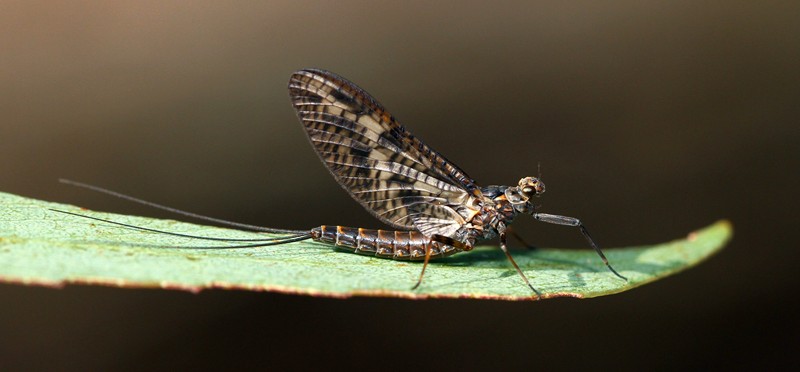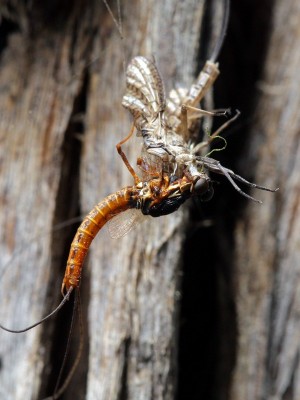Order Ephemeroptera
The name Ephemeroptera is partly derived from the Greek word Ephemeros, which means “short-lived”, an apt description for Mayflies. As adults, they survive for no more than a day or two, some as little as thirty minutes, their sole purpose being to mate. It’s a literal case of “here today, gone tomorrow”. But there is more to Mayflies than their brief stint on the wing. As nymphs, they can take up to two years to develop before preparing to leave their aquatic environment for their final journey.

Adult Mayflies are recognisable by their clear membranous wings (they have two pairs, but the hind wings are quite small and almost unnoticeable) and their long, filament-like tails called cerci. They usually have small heads with a pair of compound eyes, short antennae and mandibulate (chewing) mouthparts, although most adults don’t feed.

winged adult, a trait unique to these insects.
The nymphs have a similar body shape to the adults, but they are wingless and their flanks are lined with gills for extracting oxygen from water, which is where they spend their time. The diet of the Mayfly nymph usually consists of aquatic vegetation, algae and other detritis, although some species are predatory. During their development, they may moult up to 50 times before crawling from the water and shedding their nymphal skin to reveal a winged adult. One unique feature of Mayflies is that the adults of some species actually moult a second time, something that other winged insects don’t do.
The winged adults can appear in large numbers. The males and females mate on the wing, after which the females lay their eggs on the surface of water. The eggs sink to the bottom and the cycle begins again. Throughout all of their stages, Mayflies are a valuable food source for many aquatic and terrestrial predators. Because their lives are dictated by the presence of water, they are never found far from ponds, lakes, streams or rivers.
~~~~~
Click here to see the Mayfly photo galleries
~~~~~